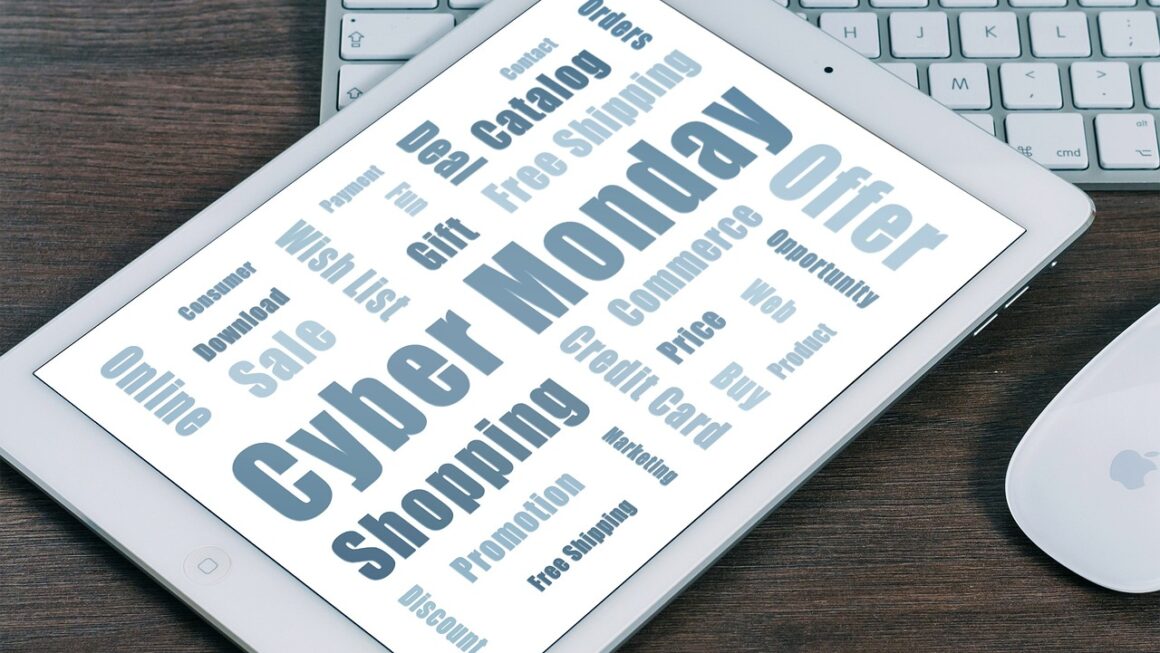Digital marketplaces have revolutionized the way we buy and sell goods and services, offering unprecedented convenience, accessibility, and choice. From sprawling e-commerce platforms to niche industry-specific hubs, these online ecosystems are reshaping the global economy. This article will delve into the intricacies of digital marketplaces, exploring their diverse forms, key benefits, and essential elements for success.
What is a Digital Marketplace?
Defining the Digital Marketplace
A digital marketplace is an online platform that connects buyers and sellers, facilitating the exchange of goods or services. Unlike traditional retail, where a single business owns and manages inventory, a marketplace acts as an intermediary, providing a space for multiple vendors to list and sell their products or services. Think of it as a digital version of a physical marketplace, like a farmers market or a flea market. Prominent examples include Amazon, Etsy, and Airbnb.
Key Characteristics
- Multiple Vendors: A core feature is the presence of numerous sellers offering a variety of products or services.
- Centralized Platform: All transactions occur through a single, unified online platform.
- Diverse Offerings: Marketplaces can specialize in specific niches or offer a broad range of products and services.
- Transaction Management: The platform typically handles payment processing, order fulfillment, and customer support (to varying degrees).
- Community Building: Many marketplaces foster a sense of community through reviews, ratings, and seller profiles.
Examples of Different Types
- E-commerce Marketplaces: Amazon, eBay, Walmart Marketplace (focus on physical goods)
- Service Marketplaces: Upwork, Fiverr, TaskRabbit (connecting freelancers and clients)
- Rental Marketplaces: Airbnb, Vrbo (short-term rentals)
- Specialty Marketplaces: Etsy (handmade and vintage items), StockX (sneakers and streetwear), Reverb (musical instruments)
Benefits of Participating in a Digital Marketplace
For Buyers
- Increased Choice: Access to a vast selection of products and services from various vendors.
- Competitive Pricing: Ability to compare prices and find the best deals.
- Convenience: Easy online shopping and delivery options.
- Reviews and Ratings: Access to customer reviews to make informed purchasing decisions.
- Secure Transactions: Most platforms offer secure payment processing and buyer protection policies.
For Sellers
- Expanded Reach: Access to a large customer base without the need for significant marketing investments.
- Reduced Overhead: Lower operational costs compared to traditional retail, as the marketplace handles infrastructure and technology.
- Simplified Logistics: Some marketplaces offer fulfillment services (e.g., Amazon FBA) to handle storage, packing, and shipping.
- Brand Building: Opportunity to build brand awareness and reputation through customer reviews and ratings.
- Data and Analytics: Access to valuable data and analytics to optimize product listings and marketing strategies. Example: Amazon provides sellers with detailed sales reports and customer insights.
Examples in Action
Imagine a small business making handcrafted jewelry. Instead of setting up their own e-commerce website and handling all the marketing and logistics themselves, they can list their products on Etsy. Etsy provides them with a ready-made marketplace, a large audience of potential customers, and tools to manage their orders and customer relationships. This allows the small business to focus on creating high-quality jewelry and growing their brand.
Key Components of a Successful Digital Marketplace
User Experience (UX)
- Intuitive Navigation: Easy-to-use search and filtering options.
- Mobile Optimization: A responsive design that works seamlessly on all devices.
- Fast Loading Speeds: Quick page load times to minimize bounce rates.
- Clear Product Information: Detailed product descriptions, high-quality images, and customer reviews.
- Seamless Checkout Process: A simple and secure checkout process with multiple payment options.
Trust and Safety
- Seller Verification: Robust seller verification processes to prevent fraud.
- Secure Payment Gateway: Secure payment processing to protect customer financial information.
- Dispute Resolution: A clear and fair dispute resolution process to handle customer complaints.
- Buyer Protection: Policies to protect buyers from fraudulent or defective products.
- Review System: A transparent and reliable review system to build trust and accountability.
Marketing and Promotion
- Search Engine Optimization (SEO): Optimizing the marketplace for relevant keywords to improve search engine rankings. For example, using keywords like “buy handmade jewelry” if the marketplace specializes in that.
- Social Media Marketing: Engaging with potential customers on social media platforms.
- Content Marketing: Creating valuable content (e.g., blog posts, articles) to attract and educate customers.
- Email Marketing: Building an email list and sending targeted marketing messages.
- Paid Advertising: Running paid advertising campaigns on platforms like Google Ads and social media.
Technology and Infrastructure
- Scalable Platform: A platform that can handle increasing traffic and transactions.
- Robust Security: Measures to protect against cyberattacks and data breaches.
- API Integrations: Integrations with other systems (e.g., payment gateways, shipping providers) to streamline operations.
- Data Analytics: Tools to track key metrics and identify areas for improvement.
- Reliable Hosting: A reliable hosting provider to ensure uptime and performance.
Example Strategies
A successful marketplace might invest in A/B testing different layouts and features to optimize the user experience. They might also implement a robust seller vetting process, requiring vendors to provide documentation and undergo background checks. Furthermore, they will actively promote the marketplace through targeted advertising campaigns and social media engagement.
Challenges and Considerations
Competition
- Market Saturation: Intense competition from established marketplaces and new entrants.
- Price Wars: Pressure to offer competitive prices to attract customers.
- Differentiation: The need to differentiate the marketplace from competitors through unique features or offerings.
Regulatory Compliance
- Data Privacy: Compliance with data privacy regulations (e.g., GDPR, CCPA).
- Consumer Protection: Adherence to consumer protection laws regarding product safety and advertising.
- Tax Compliance: Compliance with tax laws related to online sales.
Building Trust
- Combating Fraud: Preventing fraudulent activities by sellers and buyers.
- Maintaining Quality: Ensuring the quality of products and services offered on the marketplace.
- Handling Disputes: Resolving customer disputes fairly and efficiently.
Scalability
- Managing Growth: Scaling the platform to handle increasing traffic and transactions.
- Maintaining Performance: Ensuring optimal performance as the platform grows.
- Optimizing Logistics: Streamlining logistics and fulfillment processes.
Building Your Own Digital Marketplace
Planning and Research
- Identify a Niche: Focus on a specific industry or product category to differentiate your marketplace.
- Market Research: Conduct thorough market research to understand your target audience and competitors.
- Business Model: Define your business model (e.g., commission-based, subscription-based, listing fees).
- Legal Requirements: Research and comply with all relevant legal requirements.
Platform Development
- Build or Buy: Choose between building a custom platform or using a marketplace software solution.
- Essential Features: Develop essential features such as user registration, product listings, payment processing, and review system.
- Scalability: Ensure that the platform is scalable to handle future growth.
Launch and Promotion
- Soft Launch: Launch a beta version of the marketplace to gather feedback and identify any issues.
- Marketing Strategy: Implement a comprehensive marketing strategy to attract buyers and sellers.
- Customer Support: Provide excellent customer support to build loyalty and trust.
Example: Niche Marketplace
Consider a marketplace specializing in ethically sourced and sustainable fashion. This niche focuses on a specific audience with a strong interest in ethical and environmental issues. The marketplace can attract both buyers and sellers who share these values, creating a community and a unique selling proposition.
Conclusion
Digital marketplaces are powerful platforms that offer immense opportunities for both buyers and sellers. By understanding the key components of a successful marketplace, addressing the challenges, and focusing on user experience and trust, businesses can create thriving online ecosystems that connect people and facilitate commerce in innovative ways. As technology continues to evolve, digital marketplaces will undoubtedly play an increasingly important role in the global economy.






